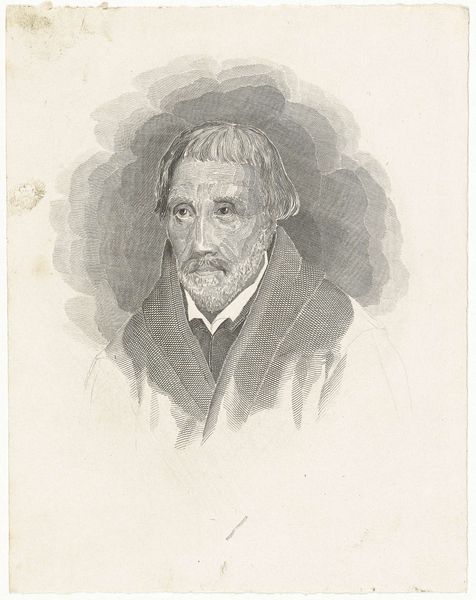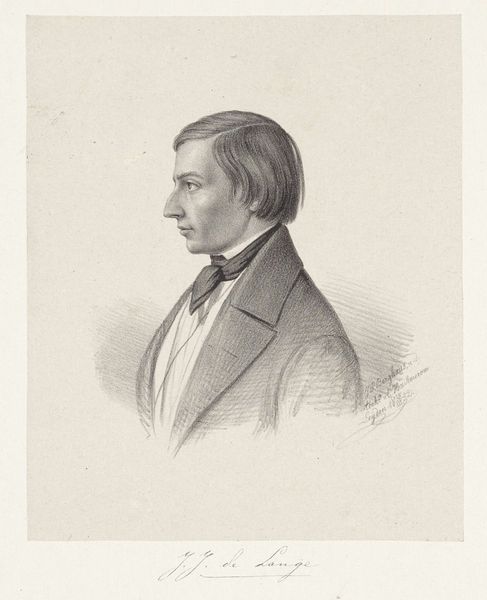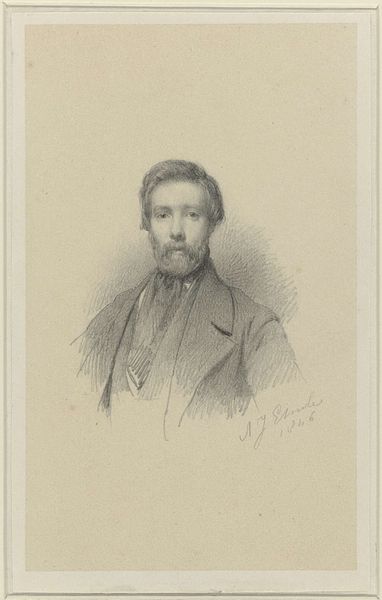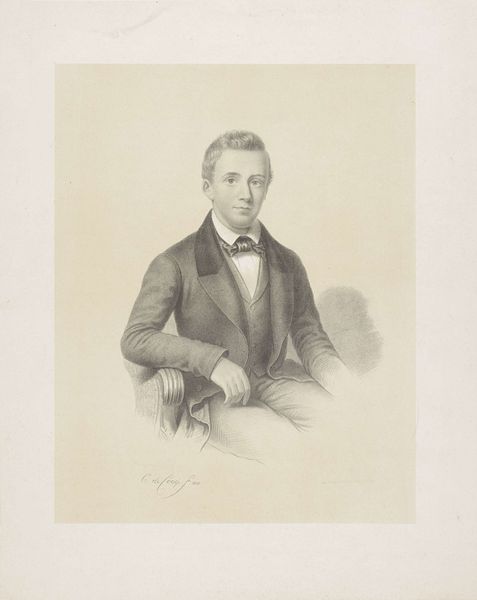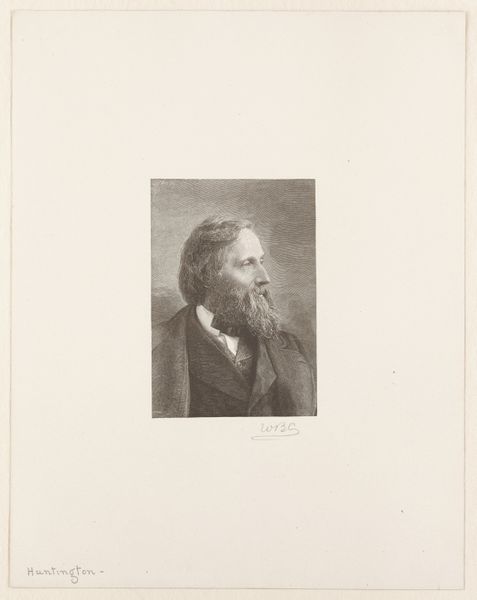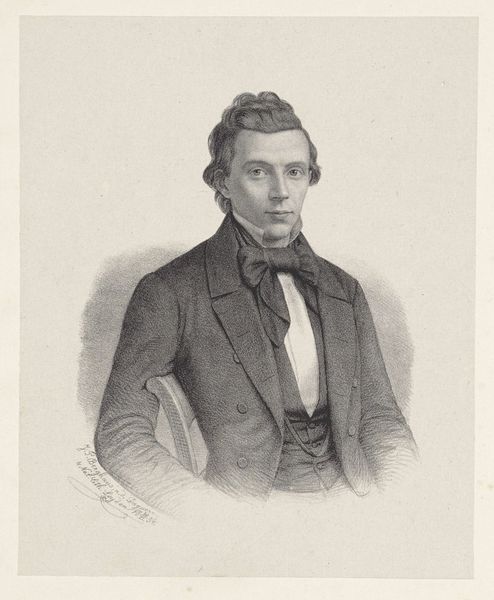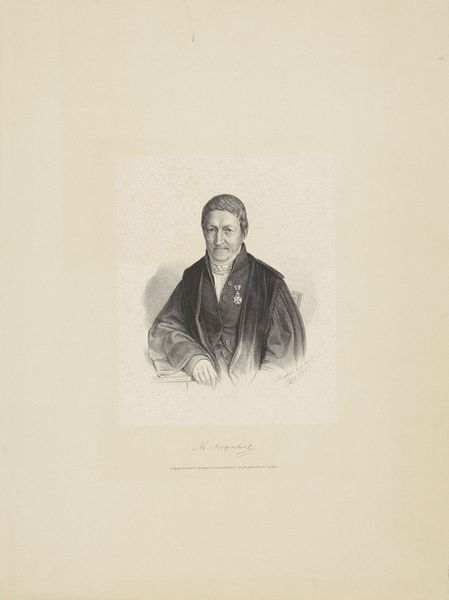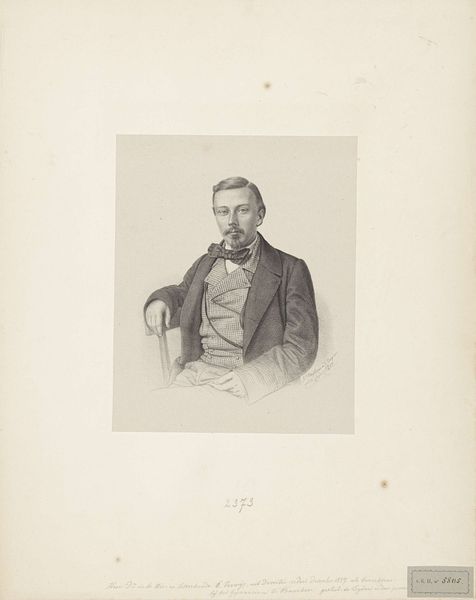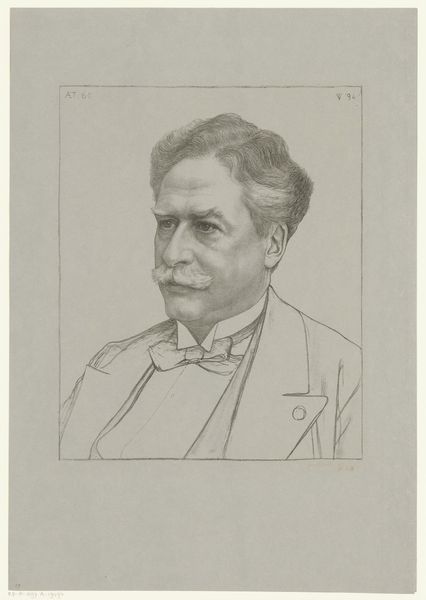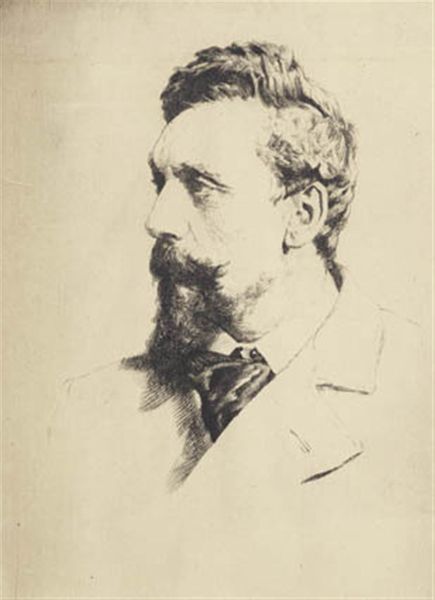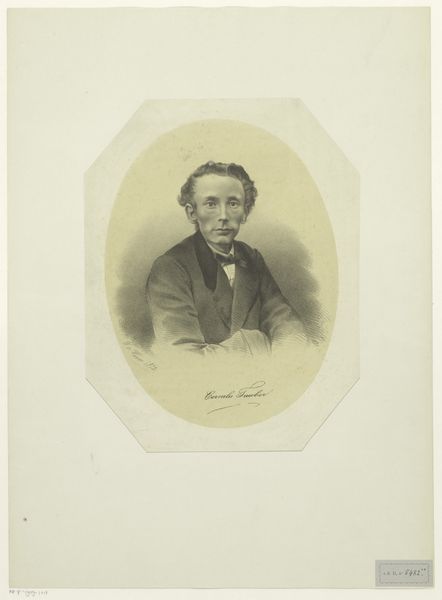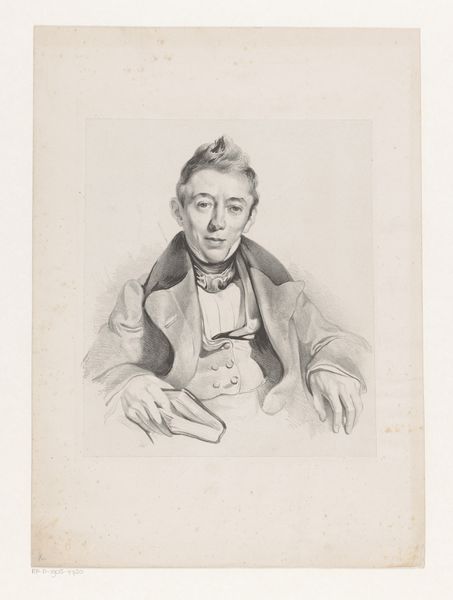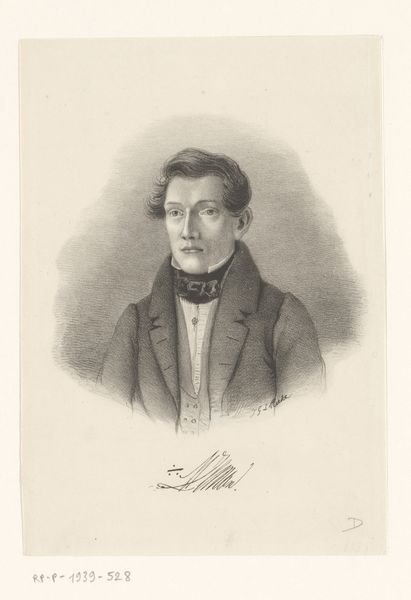
drawing, pencil, graphite
#
portrait
#
pencil drawn
#
drawing
#
dutch-golden-age
#
pencil drawing
#
pencil
#
graphite
#
graphite
#
realism
Dimensions: height 454 mm, width 325 mm
Copyright: Rijks Museum: Open Domain
August Allebé made this portrait of Multatuli, likely in the late 19th century, using graphite on paper. Notice how the artist used the pencil, with its range of soft greys and blacks, to capture the sitter’s likeness. This is a traditional way to create a portrait, but it’s also a democratic one. Pencil and paper are accessible materials, used in schools and offices, as well as artists’ studios. The hand-drawn quality of the image also signals a direct, intimate encounter between artist and sitter, even as it produces a public image. The marks on the paper carry a lot of meaning, from the precise rendering of the face to the looser, more gestural treatment of the clothing. Allebé’s skill in controlling the pencil allowed him to model the form, suggest textures, and capture light and shadow, all with a simple tool. Considering the materials and the making of this portrait gives us a deeper appreciation of the artist’s skill, and reminds us that even the simplest materials can be used to create powerful and lasting images.
Comments
No comments
Be the first to comment and join the conversation on the ultimate creative platform.
